Top Image: Emblem of the League of Nations in 1939 courtesy of the League of Nations Archive.
On Thursday, April 18, 1946, in Geneva, Switzerland, Viscount Robert Cecil, one of the original architects behind the League of Nations, delivered this final eulogy to the organization and looked towards the future:
“Let us boldly state that aggression wherever it occurs and however it may be defended, is an international crime, that it is the duty of every peace-loving state to resent it and employ whatever force is necessary to crush it, that the machinery of the Charter, no less than the machinery of the Covenant, is sufficient for this purpose if properly used, and that every well-disposed citizen of every state should be ready to undergo any sacrifice in order to maintain peace…I venture to impress upon my hearers that the great work of peace is resting not only on the narrow interests of our own nations, but even more on those great principles of right and wrong which nations, like individuals, depend.
The League is dead. Long live the United Nations."
After Cecil’s address, the Assembly of the League then passed a resolution stating that “following the close of the present session…the League of Nations shall cease to exist except for the sole purpose of the liquidation of its affairs.” Thus, on Friday, April 19, 1946, the League of Nations dissolved, ending 26 years of the existence of an organization which ultimately had proven incapable of preventing the outbreak of the most destructive war in human history. This epitaph of failure is often the only remembrance laid at the League’s gravesite, however, the League is certainly not unique among interwar institutions that fell well short of meeting the challenges of containing aggression and fascism. While the League of Nations did not succeed in its primary goals of collective security, disarmament, or a large worldwide membership, it is important not to overlook or downplay certain achievements and precedents that were set by the League during the quarter century of its life. Nevertheless, it is the League of Nations many shortcomings to which the gravest attention should be paid.
Though cooperative pacts and agreements between nations were not new, the genesis behind the idea of an international body to promote human rights and the fair treatment of peoples dates to the latter half of the nineteenth century with the first Geneva and Hague Conventions. Following the outbreak of World War I, public support for the idea of a ‘League of Peace’ or ‘Council of States’ to be established after the conclusion of the war grew rapidly among the Entente nations. US President Woodrow Wilson explicitly enumerated the call for a “general association of nations…for the purpose of affording mutual guarantees of political independence and territorial integrity to great and small states alike” as the final point of his 14 Points speech to Congress in January 1918. The planned League would also seek to institutionalize world politics in the hopes of eliminating the secret alliances, treaties, and arms races identified and blamed by the Entente leaders as the chief causes behind World War I. By focusing on open diplomacy, cooperation, and disarmament, the League of Nations, as established at the Paris Peace Conference by the Treaty of Versailles, attached this preamble to its 26-article Covenant:
In order to promote international co-operation and to achieve international peace and security
By the acceptance of obligations not to resort to war,
By the prescription of open, just and honourable relations between nations,
By the firm establishment of the understandings of international law as the actual rule of conduct among Governments, and
By the maintenance of justice and a scrupulous respect for all treaty obligations in the dealings of organised peoples with one another,Agree to this Covenant of the League of Nations.
The League to Enforce Peace published this full-page promotion in The New York Times on Christmas Day 1918. It resolved that the League "should ensure peace by eliminating causes of dissension, by deciding controversies by peaceable means, and by uniting the potential force of all the members as a standing menace against any nation that seeks to upset the peace of the world." Courtesy of The New York Times.
Fourty-four nations signed the Covenant, joining the new League of Nations. The United States would not be a signatory, then or ever; a bitter defeat for President Wilson who had been awarded the Nobel Peace Prize in 1920 largely on behalf of his work in promoting League membership. The number of League nations would—at its greatest extent in 1935—stand at 58. By the time of its dissolution, only 23 member countries would remain.
The League of Nations, similar to its successor organization the United Nations, maintained an executive League Council consisting of four unelected permanent members—the United Kingdom, France, Italy, and Japan, drawn from the victorious Entente—and four non-permanent member nations which were elected to serve out three-year terms. Like the United Nations as well, the League maintained bureaus, commissions, and bodies dedicated to specific missions such as disease eradication, campaigning against child labor, improving conditions for workers, curtailing human trafficking and the international drug trade, and arguing for women’s rights. The League of Nations was also the first international body to codify the rights of refugees, stateless individuals, and ethnic minorities, imbuing them with recognition and certain protections. At its most prolific and politically significant, the League of Nations also acted as the engine behind a series of major disarmament efforts, such as the Washington Naval Treaty and the Kellogg-Briand Pact. However, despite the well-intended and high-minded rhetoric behind many of these and other similar League agreements, they became effectively impossible to enforce faced with the growing rearmament and the expansion of the militaries of Germany, Italy, Japan, and the Soviet Union in the early 1930s.
The first meeting of the Assembly of the League of Nations took place on November 15, 1920 at the Salle de la Réformation in Geneva. Courtesy of the National Library of Norway.
Throughout its existence, the League of Nations was also hindered in its lofty aspirational goals by its failure to separate the organization’s policies from the realpolitik of its permanent executive membership. Sometimes labeled as the “League Of Victors” for its exclusion of Germany (until 1926) and the Soviet Union (until 1934), the League of Nations was often seen as a little more than an instrument to protect French and British international, economic, and colonial interests. For instance, the guarantees of the right for self-determination did not extend to French or British colonial possessions in Africa or Asia. Nor did it extend to many former territories of the Ottoman Empire in the Levant or former German colonies in the Pacific; these lands being placed under the League Mandate System, which, in Eurocentric and ethnocentric terms, pledged to hold territories in trust until “certain communities” had “reached a stage of development where their existence as independent nations can be provisionally recognised.” The criteria for when or how such stages of development would be achieved by these certain communities was never fully examined or explained.
Finally, it was the League’s failure to provide a mechanism for the enforcement of international collective security that exposed its most fatal flaws and inexorably linked it to the policies of appeasement. Lacking an armed forces of its own, and sometimes requiring the unanimous consent of the entire League Assembly to come to a resolution, the League’s neutrality and impartiality in crucial moments could be interpreted as indecision at best and tacit consent at worst. Arbitration by the League did not stop Italy from invading and annexing Ethiopia in 1935 and the threats of sanctions, which were never actually levied, did not stop Germany from marching in and remilitarizing the Rhineland the following year. By 1939, as the climate toward war became more general, the Soviet Union was expelled from the League after invading Finland. Japan, Germany, and Italy had already withdrawn from the League earlier in the decade. For the next six years, the headquarters of the League, the Palace of Nations in Geneva, remained empty, with the League Assembly transferring power to Secretary General, Joseph Avenol of France, to allow the League to continue to legally exist and to carry out reduced humanitarian operations.
As early as the Tehran Conference in 1943, the Allies agreed to the creation of a successor body to the League of Nations. In 1946, the final General Secretary, Seán Lester of Ireland, oversaw the League’s closure, turning over the League’s assets and functions to the new United Nations. The Palace of Nations today serves at the United Nations Office at Geneva (UNOG), one of four major offices of the United Nations where different UN agencies maintain a joint presence.
Although the goals set out in its Covenant went largely unrealized, many of them—commitments to peace, self-determination of peoples, and human rights—found new life and new purpose within the Charter of the United Nations. Similarly, many of the principal organs of the League —such a permanent executive council—served as models for the organization of the new United Nations. In 2017, the UN Library & Archives Geneva launched the Total Digital Access to the League of Nations Archives Project (LONTAD), with the intention of preserving, digitizing, and providing online access to the League of Nations archives, as well as further insights into this first ambitious attempt at constructing a more peaceful world order.
‘The League is dead. Long live the United Nations.’
-Robert Cecil
This article is part of a series commemorating the 75th anniversary of the end of World War II made possible by the Department of Defense.
Collin Makamson
Collin Makamson is the former Assistant Director of Education for Curriculum at The National WWII Museum.
Cite this article:
MLA Citation:
APA Citation:
Chicago Style Citation:
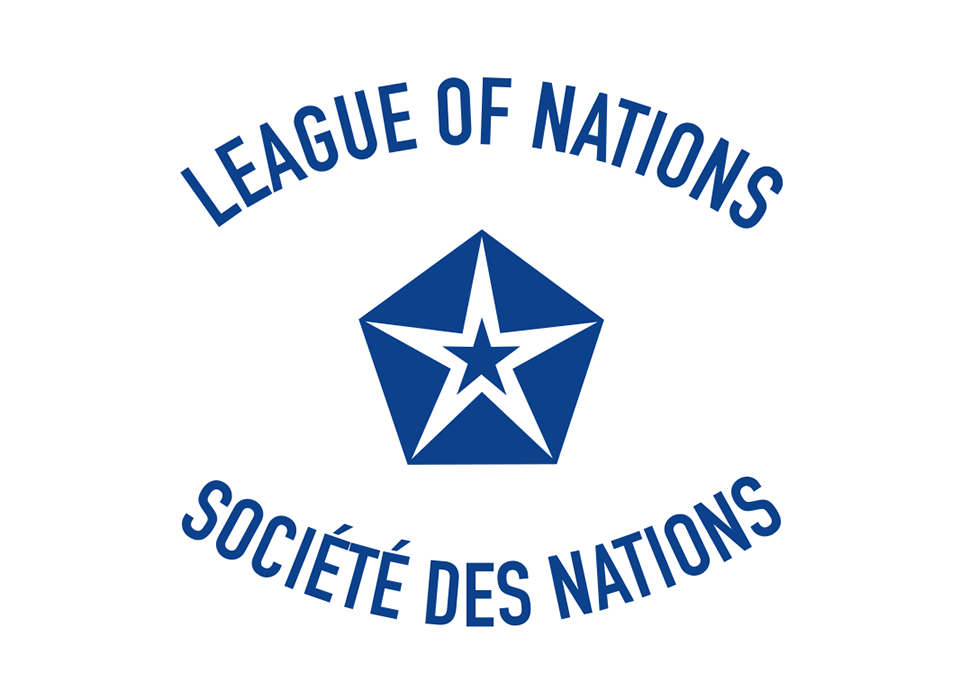
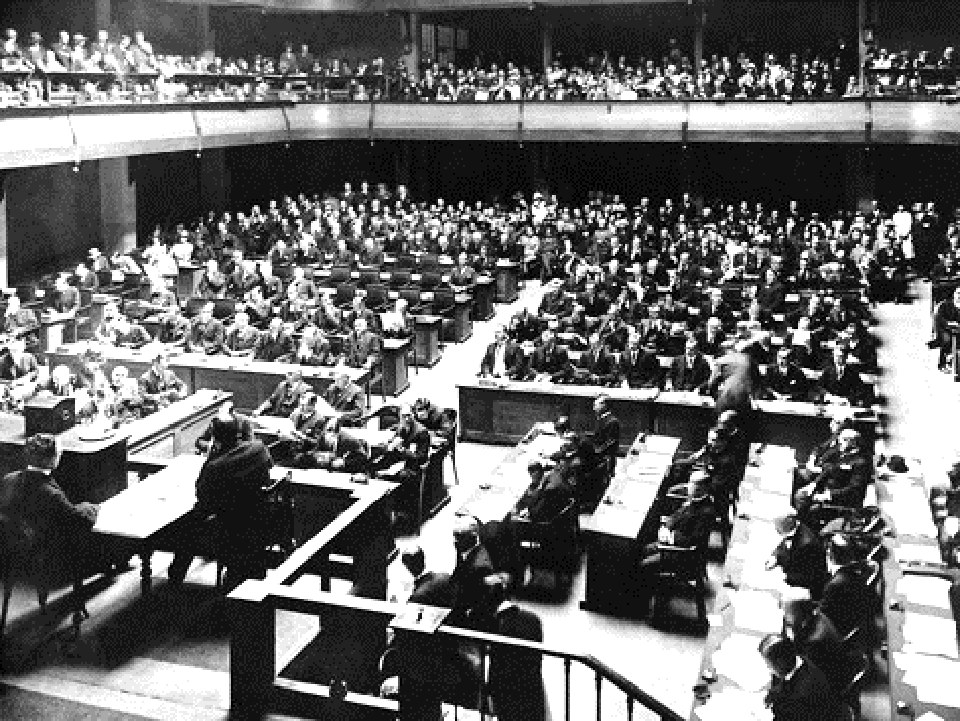
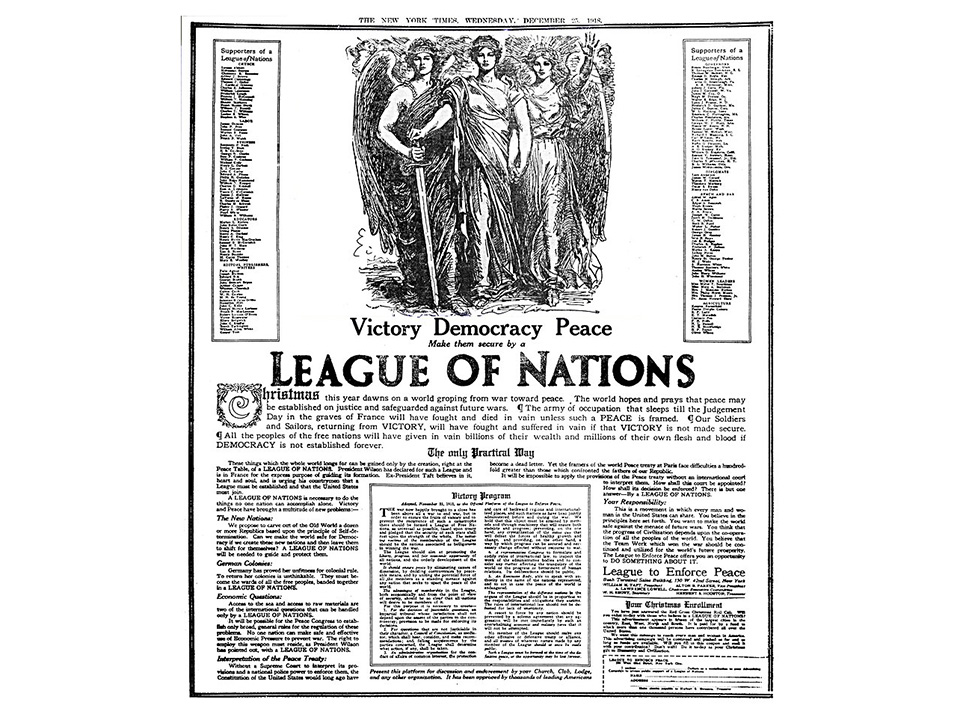
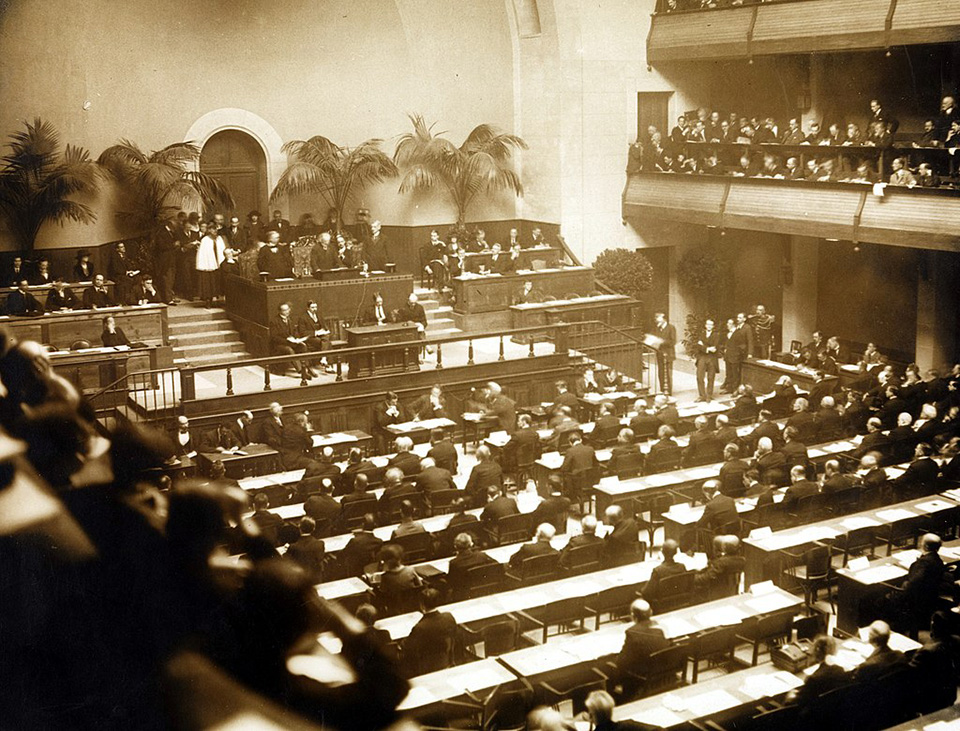
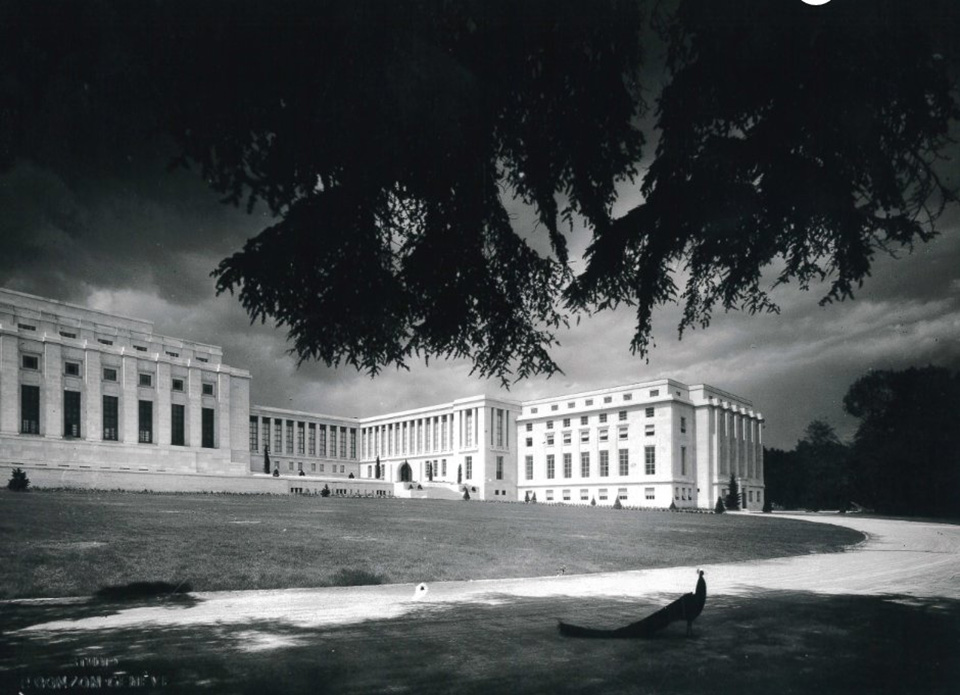
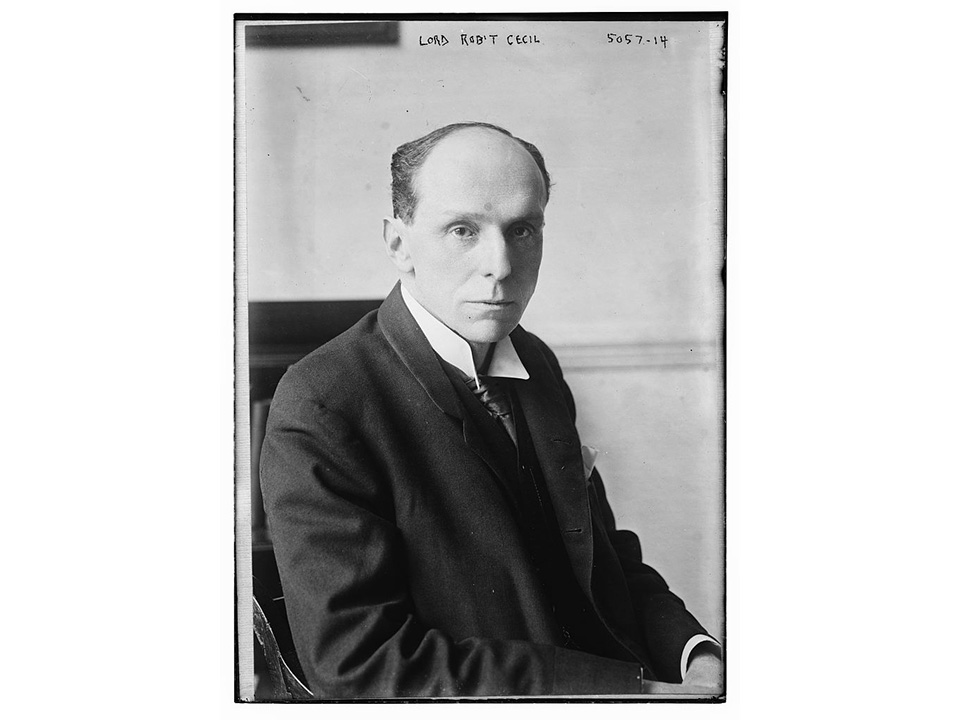
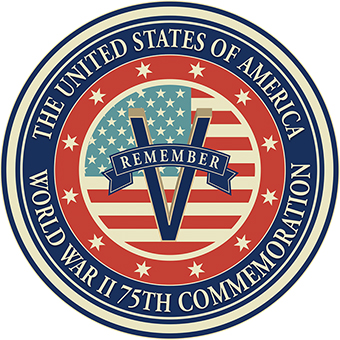

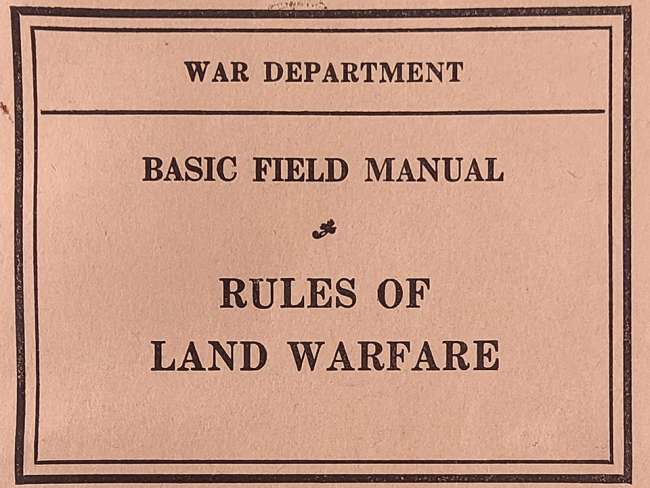
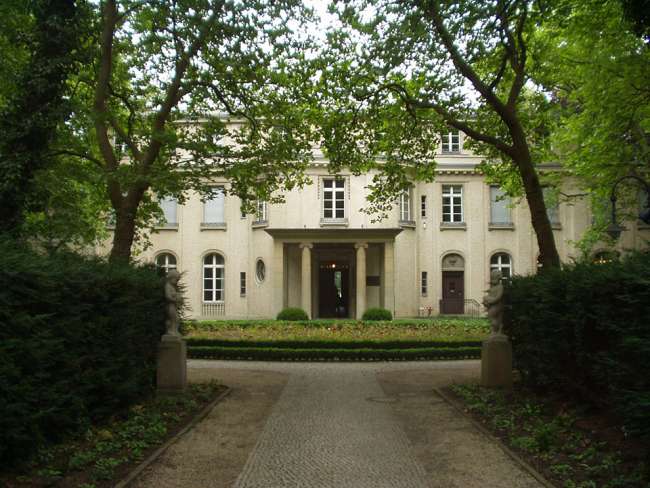
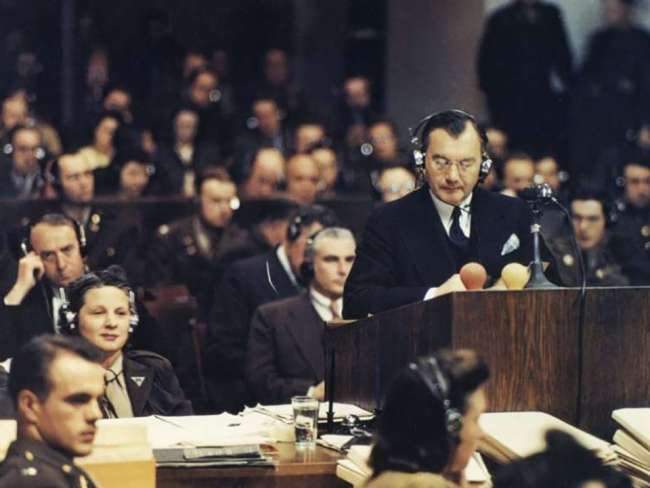
![Max Fuchs, New York City cantor, sings as Rabbi Sydney [sic] Lefkowitz, Richmond, VA, conducts the first Jewish services from Germany.](/sites/default/files/styles/max_650x650/public/2025-10/image1.jpg)






